Tomorrowland is Today! 11 Cool Facts About the Film
Tomorrowland is TODAY (well the premiere is today), starring George Clooney, Raffey Cassidy and Britt Robertson. This film harkens back to Walt Disney’s vision, represented in his theme parks, of an optimistic and high tech future. The myth goes (and some think it's true) that Walt Disney was part of a secret band of optimistic thinkers, code-named Plus Ultra – the mantra of Spanish explorers. The group is rumored to have begun in 1889 in Gustave Eiffel’s private apartment in the Eiffel Tower with fellow thinkers American Thomas Edison, Frenchman Jules Verne and Serbian Nikola Tesla. The belief is that “Tomorrowland” might actually exist in another dimension as a direct result of the forward-thinking, futuristic ideas that the group developed. In this sense, Tomorrowland just might be the most Disney of all films because its essence is who Disney, the man, really was. This film is the story of visionaries and forward thinkers, characters fighting a prevailing negativity and cynicism.
We certainly don’t want to be spoilers, but we would like to provide you with eleven fun facts about Tomorrowland’s origins and production process. We hope our list adds to your enjoyment of the film:
- HISTORY: Tomorrowland (California) opened in Disneyland on July 17, 1955. The five original lands are Adventureland, Frontierland, Fantasyland, Tomorrowland and Main Street USA. Tomorrowland was the last of the ‘lands’ to be completed. When Disneyland opened, Tomorrowland represented the future in the year 1986.
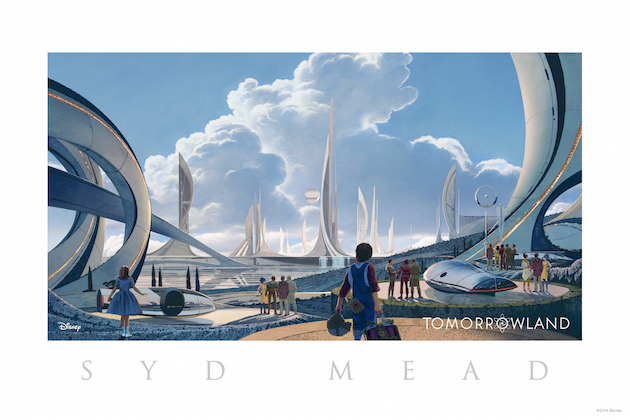
- STORY IDEA: Writer/director Brad Bird and writer Damon Lindelof found their inspiration for Tomorrowland from the contents of a box that was labeled “1952,” supposedly discovered by accident in the Disney Studios archive. The box contained models and blueprints, photographs and letters related to the creation of Tomorrowland and Disney’s contribution to the 1964 World’s Fair. Lindelof was excited by the find, recalling, “I began to imagine that the contents of the box were a guide to a secret story that nobody knew. But if so, what would that story be? And the most obvious answer to me was that there really was a place called Tomorrowland that was not a theme park but existed somewhere in the real world.”
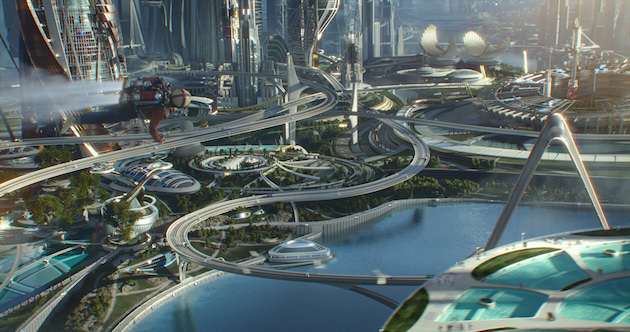
- WORLD’S FAIR: The 1964 World’s Fair plays a prominent role in Tomorrowland. Walt Disney created three attractions for the 1964 World’s Fair, “It’s a Small World,” “Carousel of Progress” and “Great Moments With Mr. Lincoln.” While most of the Fair was torn down long ago, one iconic piece, the most iconic piece, remains and is in the film – The Unisphere, which is still standing in Flushing Meadows, New York, just outside of the USTA National Tennis Center. The huge globe’s fountains are still in place, as well as the gardens.
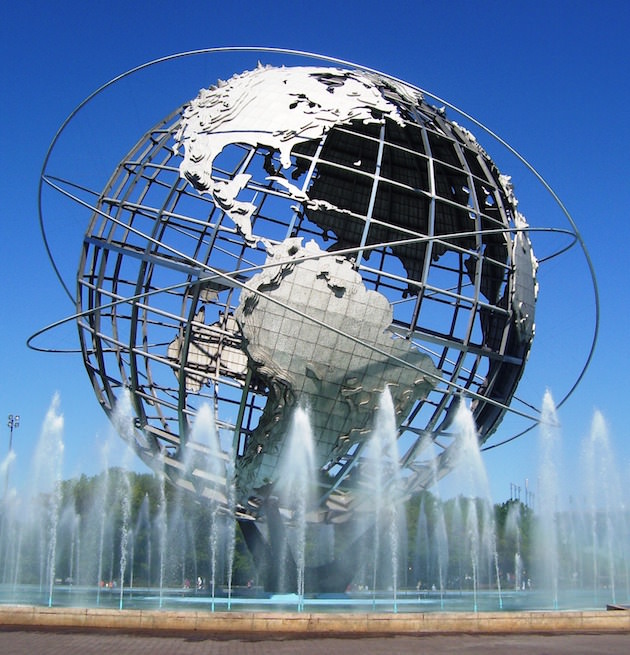
- EPCOT: Following the World’s Fair, Disney began planning for a real “Tomorrowland” in Buena Vista, Florida – EPCOT: Experimental Prototype Community of Tomorrow. Disney’s vision was for a model city “where technology wed urban planning to create an optimal living environment…with two small residential districts for employees and their immediate family members.” After Disney died, the model community concept became what we know today, a kind of “permanent World’s Fair;” one of what is now four theme parks within the Disney World Resort complex.
- ACADEMY-AWARD WINNING DIRECTOR/WRITER/PRODUCER: Brad Bird came to this film with long standing relationship with Disney through Disney Animation. At the age of 14 Bird sent Disney Animation a 15-minute short that he had created over the course of three years, following a visit to Disney Studios at age 11. Impressed by the young filmmaker, Bird was offered a mentor – none other than famous master animator Milt Kahl.
- ORIGINS OF SCI-FI: The couple in the film who own the memorabilia emporium are Hugo and Ursula Gernsback (Keegan-Michael Key and Kathryn Hahn). Using of the name Hugo Gersback is homage to the publisher of the magazine Amazing Stories – Hugo Gernback. Launched in 1926, Gernsback is credited with creating the sci-fi genre.
- LOCATION, LOCATION, LOCATION: Tomorrowland had over 90 different combinations of sets and locations, and moved 10 times – almost unheard of in the film and television industry – including cities/towns in Canada, Spain, the Bahamas, New York City – Queens, Florida, and Disneyland (California). With all the moving and the use of CGI, production designer Scott Chambliss and special effects producer Tom Peitzman did find Bird’s Tomorrowland at the City of Arts and Sciences in Valencia, Spain. The architecture is both prehistoric and futuristic.
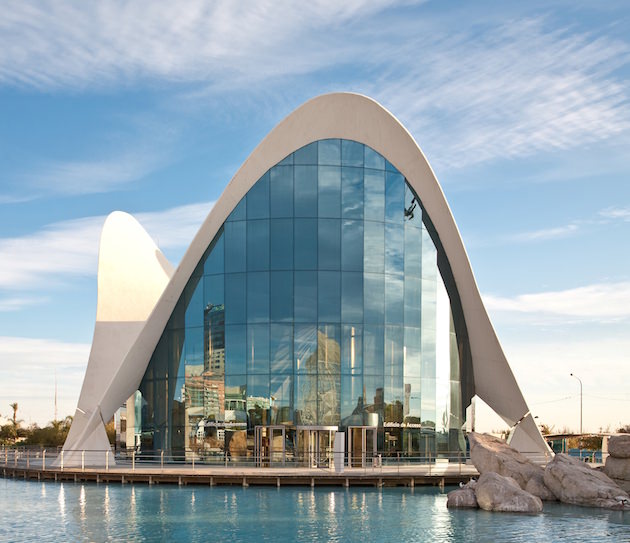
- SPECIAL EFFECTS/SET DESIGN: The Bridgeway Plaza set in Vancouver took six months to build and is half the size of a football field. It was the site of some of the most challenging set design and special effects work of this or any film. Special effects producer Tom Peitzman said that having part of a frame ‘practical’ gives the CGI something to” hinge on” and enabled him to “achieve a more natural, seamless look.” The fully functional monorail was a special effects/engineering marvel at 35,000 pounds, set 16-feet and the air with hydraulics capable of stopping on the exact spot over and over again. Special effects coordinator Mike Vezina noted, “For positioning, we used laser beams that told us within one thousandth of an inch if the monorail was going past its mark so we could then shut it down.”
- ROCKET: The set that the filmmakers say encapsulated the “awe” of the film was the real-life NASA launchpad at Cape Canaveral. Brad Bird, “Our shoot timed with the launch of the MAVEN probe to Mars, so we actually got to watch from the pad that launched a lot of the NASA missions.”
- COSTUME designer Jeff Kurland created a dress for the character Athena (Raffety Cassidy) that was typical for an 11-year-old in 1964, but under closer inspection is dyed to match her eyes with an overlay of a pattern based on the golden ratio, made out of algorithms and theorems, numbers and letters, which keeps repeating so the lines are not straight.
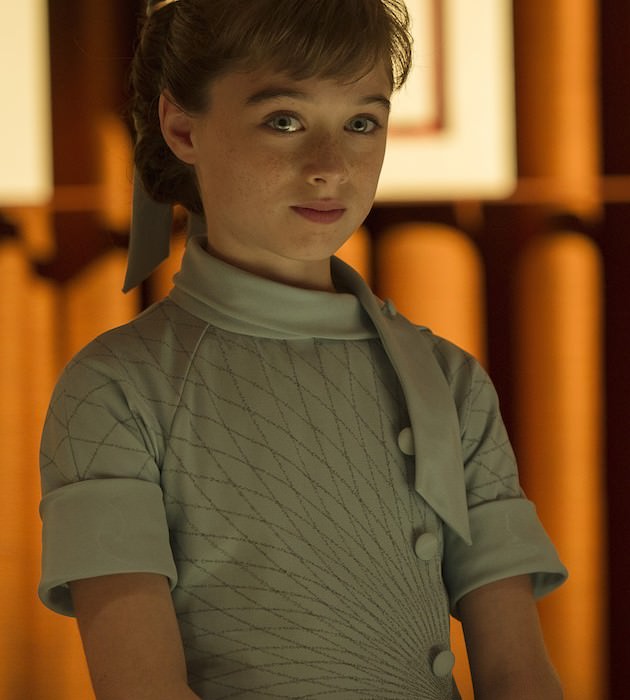
- PROPS (JET PACK, PIN): Supervising prop master Kris Peck said the prop in Tomorrowland that embodies the optimism of 1964 was the jet pack used by George Clooney’s childhood alter ego, actor Thomas Robinson. ““Frank’s [Clooney’s character] jet pack is representative of the optimism of the future… James Bond had a jet pack sequence in a 1960s film; you saw jet packs in shows like The Jetsons. But it is the Tomorrowland ‘pin’ that was the single most important prop. “Because without the pin there’s no Tomorrowland.”
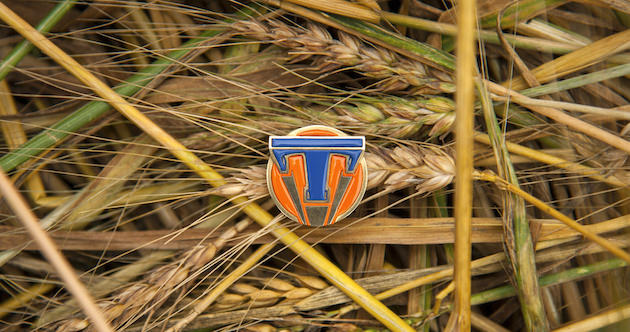
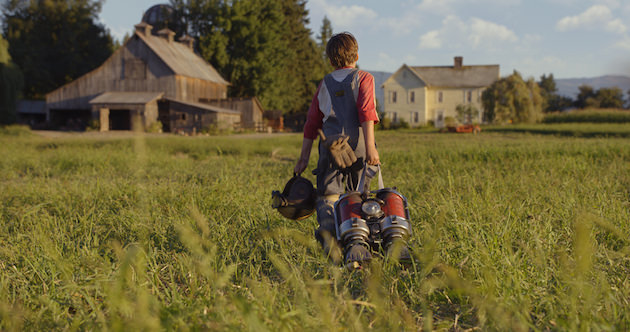
Did we whet your appetite?
Featured image: Disney's TOMORROWLAND..Young Frank Walker (Thomas Robinson) ©Disney 2015


